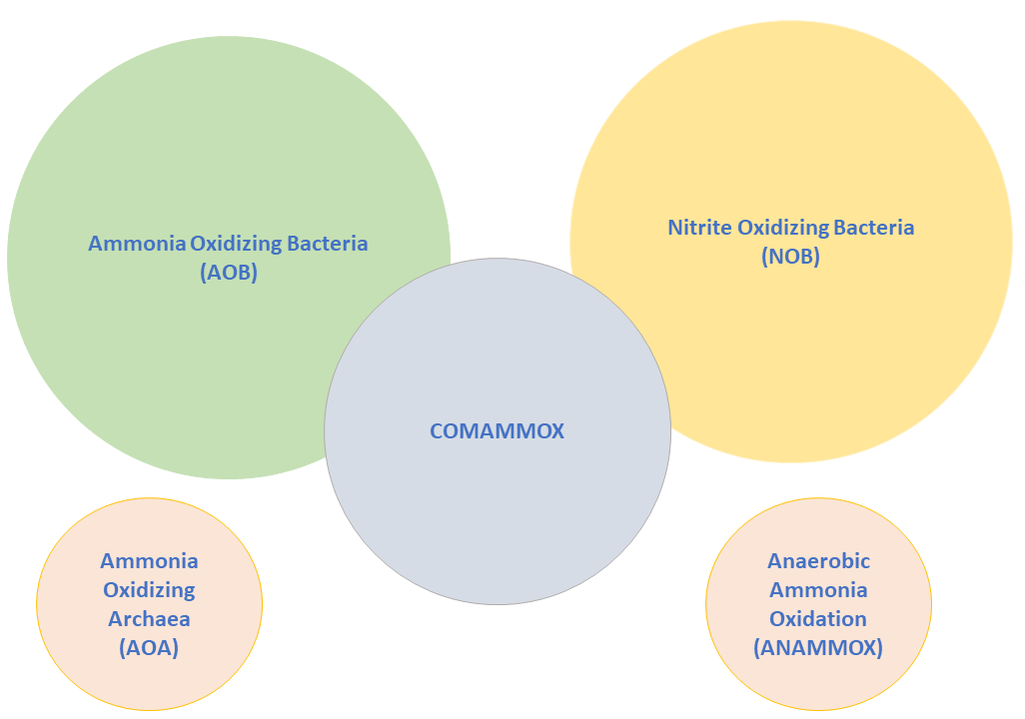After testing industrial, municipal, and even Aster Bio's own "nitrifier" culture reactor, we have noticed that removing ammonia and nitrite from wastewater is a complex process that can involve many different microbes working as part of the microbial community. The most common "types" of nitrifiers are summarized below:
- Ammonia Oxidizing Bacteria (AOB) - the type organism here is Nitrosomonas. This group convert ammonia into nitrite. This has often been called the rate limiting step in nitrification. In pratice, the AOB cultures were lower than expected in testing of working systems. Meanwhile, a commercial nitrifier producition tank had 80 - 90% Nitrosomonas as given by 16s sequencing.
- Nitrite Oxidizing Bacteria (NOB) - the most common referenced organism is Nitrobacter. However outside the nitrifier reactor, the primary NOB is Nitrospira. Why the difference between a reactor and wastewater treatment units? It appears to be related to the mixed cultures and how nitrite concentrations are concurrently produced and oxidized which leads to lower nitrite concentrations than is seen in a lab reactor.
- Complete Ammonia Oxidation (COMAMMOX) - during MCA tests, Aster Bio has found Nitrospira reads at much higher levels than Nitrosomonas (often 5 - 10x higher concentrations). This fact led us to evaluate Nitrospira's metabolism. In addition to nitrite oxidation, a subset of Nitrospira can also oxidize ammonia into nitrite. These Nitrospira are the COMAMMOX bacteria, and appear to be very common in wastewater treatment.
- Ammonia Oxidizing Archaea (AOA) - archaea are a different kingdom than bacteria and are most often seen as methanogens in anaerobic digesters. In systems with lower pH resulting in more ammonium (NH4+), AOA which utilize NH4+ rather than NH3 become more important for ammonia oxidation. We are still exploring the role of AOA in wastewater and how vital they are for ammonia oxidation.
- Anaerobic Ammonia Oxidation (ANAMMOX) - relies on a novel biochemical pathway where organisms shunt nitrite and ammonia directly to nitrogen gas. This avoids the energy use oxidizing nitrite to nitrate while also accomplishing denitrification. ANAMMOX cultures have a slow rate of growth and much research is being done on how to optimize wastewater treatment systems to take advantage of this metabolic pathway. So far, it appears many of the ANAMMOX cultures are in the Planctomycete phylum.
- Heterotrophic nitrification - bacteria including some Pseudomonas, Paracoccus, and Alcaligines have the ability to obtain energy from ammonia oxidiation. However, the rate of ammonia oxidation is lower than that seen in obligate chemotrophic organisms.


 RSS Feed
RSS Feed